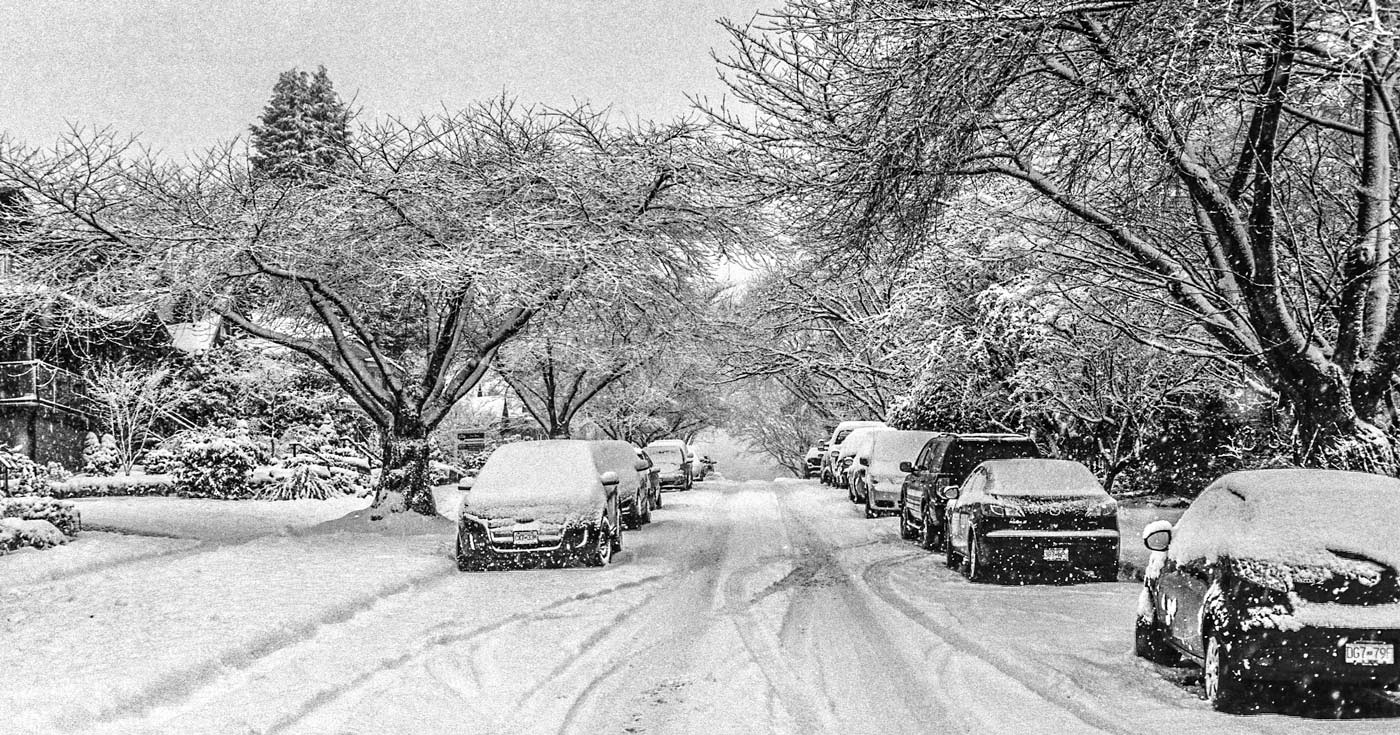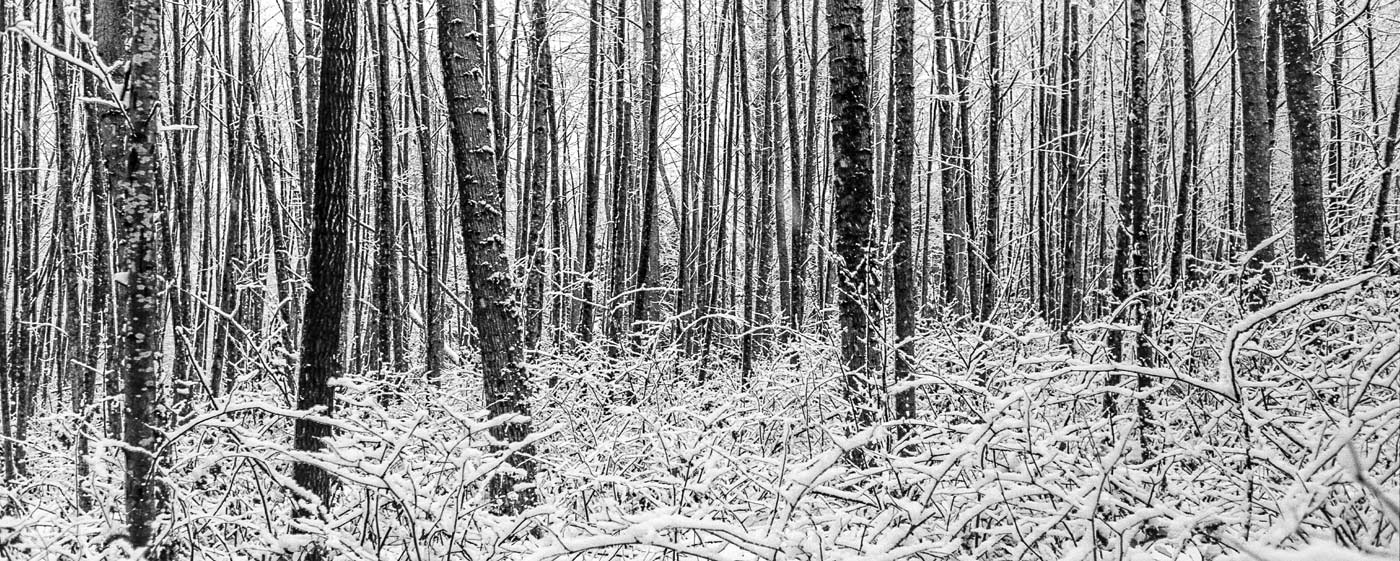This past Christmas had several days of beautiful white snow. I am sure there were many who did not appreciate it but I found it wonderful. It was a chance to get out into the winter with a camera and try to capture it: not just get a picture of it but to actually capture the feeling of it, the silence, the softness, the cold, the essence of falling snow.
At the time I had some Ilford PanF Plus 50 film in my Canon Model L1 and so it became my camera of choice. I put it in a camera bag with a 35mm f3.5 Serenar and a 50mm f1.9 Serenar and lots of lens tissue.
My Canon L1 and the two Serenar lenses I used to create the images here: 50mm f/1.9 and 35mm f/3.5mm
The snow created a wonderland and I purposely went out while the white blanket was falling. My old camera is certainly not waterproof but I kept it in my camera bag taking it out only when I was ready for the picture. I was using my Sekonic light meter to determine exposure before I brought out my camera. The scene was so flat and grey white in every direction that the reading was the same no matter which way I turned. Even doing that, keeping the lens down, keeping the cap on, the lens still got water on it. So I carried a fistful of tissue and gently wiped the lens every time. A drop of water on the lens will introduce an area of blur or softness in the picture – especially if there is a filter on the lens that holds the drop a little out from the front element.
Winter Park – this picture was taken standing ankle deep in new white snow in the park near our home. There is a special silence about falling snow that is unique.
I like my picture in the park and the one on the street near our house but they were not what I wanted. As much as I admired them they did not touch me like some images do.
Near there was a small patch of woods. I have taken pictures there in the past and like the location. So in the snow, slipping and sliding, I walked into the woods and took several more pictures. If I was using digital I would have taken dozens but film imposes discipline.
When I developed the roll several days later and scanned the negatives I found this picture below. This was shot with the 35mm Serenar and this image has captured me. This is what I was seeking.
Technically, it is a high contrast black and white image with strong patterns. It does not have much in the way of middle grey tones. And yet it portrays the quiet, cold, silence of a forest in winter. Looking at this I can imagine being lost in these woods and snow and how vulnerable I would be.
A Forest in Winter – while the snow is still falling and the branches below are loaded with snow.
I like this picture. I can look at it over and over and still enjoy it. I have it as my wallpaper on my computer at work and I have printed a large 13 x 19 copy of it that is on the wall in my den. I can see a print of this image on a wall in an ultra modern home decorated in greys and whites.
This image touches me. I keep coming back to it and just looking at it. But why? Why does this image attract me so strongly while the other two, which I like, do not have the same impact?
It may be my childhood here in BC. My father used to take my sister and I out into the bush on the Blair farm in Langley to find our Christmas Tree every year. I remeber the woods then looking like this. Growing up in Canada, snowy woods were a common theme that I experienced often. Is this why I get so much pleasure from it?
Do others get the same rush from it? Now that is an interesting question. If it is an effect unique to me then it lies within my own experience. But, if it touches others with winter’s chill then I have captured something more universal.
For me, there is a real experience attached to it. I was there and took the picture. I remember the day.
But if my picture touches a chord in others, if I can touch a universal nerve, then I may have created more than a picture. It has to be an element of a work of art that it reaches a common sensitivity within our culture or even within a wider humanity.
I think that to be art there must be an impact on viewers beyond the experience of the artist. But whether I have done that is not up to me to judge. It is a verdict to be handed down by others and that can only be done if the image is created in a medium that, in itself, reaches out to others. The print is everything. We keep coming back to that essential truth.
So that is the next step. I have to get a professional high quality scan of the negative, and then create a print worthy of the image.






